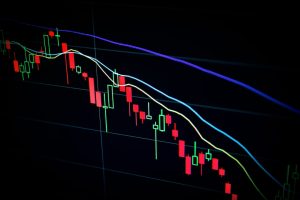Intraday levels in forex refer to the price levels at which a currency pair is likely to find support or resistance during a trading day. These levels are important for traders because they provide a framework for making trading decisions, such as when to enter or exit a position.
In this article, we will discuss various methods that traders can use to find intraday levels in forex.
1. Pivot Points
Pivot points are a popular method for finding intraday levels in forex. Pivot points are calculated based on the previous day’s high, low, and close prices. The pivot point itself is the average of the previous day’s high, low, and close prices. Traders then calculate several support and resistance levels based on this pivot point.
The most commonly used pivot point levels are:
– R1: First resistance level, calculated as 2 x Pivot Point – Low of the previous day
– R2: Second resistance level, calculated as Pivot Point + (High of the previous day – Low of the previous day)
– R3: Third resistance level, calculated as High of the previous day + 2 x (Pivot Point – Low of the previous day)
– S1: First support level, calculated as 2 x Pivot Point – High of the previous day
– S2: Second support level, calculated as Pivot Point – (High of the previous day – Low of the previous day)
– S3: Third support level, calculated as Low of the previous day – 2 x (High of the previous day – Pivot Point)
Traders use these levels as potential areas of support and resistance. For example, if the price of a currency pair is approaching the R1 level, a trader may consider taking a short position, expecting the price to reverse at that level.
2. Fibonacci Retracement
Fibonacci retracement levels are another popular method for finding intraday levels in forex. Fibonacci retracement levels are based on the Fibonacci sequence, which is a series of numbers where each number is the sum of the two preceding numbers.
The most commonly used Fibonacci retracement levels in forex are 38.2%, 50%, and 61.8%. These levels are calculated by taking the high and low of a previous price move and applying the Fibonacci sequence.
Traders use these levels as potential areas of support and resistance. For example, if the price of a currency pair is approaching the 61.8% retracement level, a trader may consider taking a short position, expecting the price to reverse at that level.
3. Moving Averages
Moving averages are another method for finding intraday levels in forex. Moving averages are calculated by taking the average price of a currency pair over a certain period of time.
Traders use moving averages as potential areas of support and resistance. For example, if the price of a currency pair is approaching a moving average, a trader may consider taking a position, expecting the price to reverse at that level.
The most commonly used moving averages in forex are the 20-day moving average and the 50-day moving average.
4. Market Profile
Market profile is a method for finding intraday levels in forex that is based on the volume of trading activity at different price levels. Market profile charts display the volume of trading activity at each price level over a certain period of time.
Traders use market profile charts to identify areas of high volume, which can indicate potential areas of support and resistance. For example, if the price of a currency pair is approaching an area of high volume, a trader may consider taking a position, expecting the price to reverse at that level.
Conclusion
Finding intraday levels in forex is essential for making trading decisions. Traders can use a variety of methods to find these levels, including pivot points, Fibonacci retracement, moving averages, and market profile. By using these methods, traders can identify potential areas of support and resistance, which can help them make more informed trading decisions.






